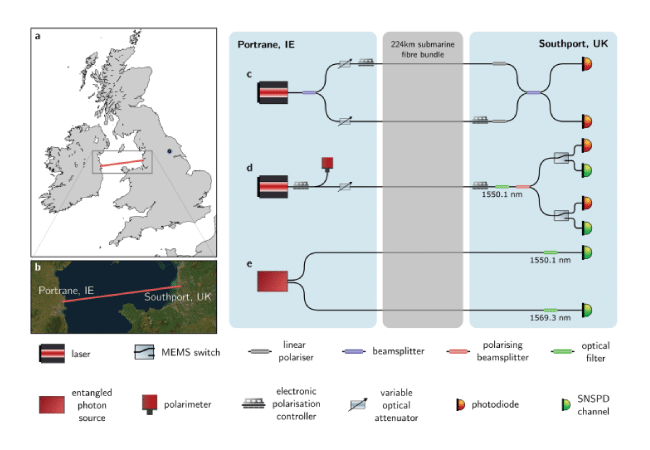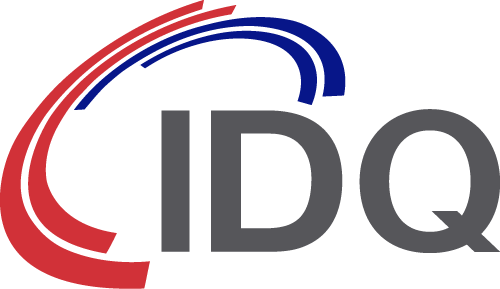Researchers leverage IDQ SNSPDs to demonstrate UK-Ireland underwater quantum communications feasibility
In an important step towards practical quantum networks over existing telecommunications infrastructure, a team from the University of York has successfully demonstrated the feasibility of a 224 km undersea cable for quantum communications. The cable, owned and operated by bandwidth infrastructure provider euNetworks, runs between Ireland and the UK under the Irish Sea.
The researchers performed a series of experiments to assess the suitability of this fiber link for quantum communications protocols. First, they measured the relative phase drift between two paired fibers in the channel, finding phase variations within the range of common stabilization techniques. This suggests the channel could allow successful implementation of phase-based protocols such as twin-field QKD. Next, they studied the polarization stability of the channel, implementing a proof-of-concept prepare-and-measure based QKD protocol to explore the timescales over which polarization is sufficiently stable. The results are promising for implementation of a polarization encoded BB84 protocol. Finally, they demonstrate the presence of entangled photon pairs via coincidence measurements, after these photons have each traveled 224 km over their separate fibers, and in the presence of significant channel noise.
 B. Amies-King, K. Schatz, H. Duan, A. Biswas, J. Bailey, A. Felvinti, J. Winward, M. Dixon, M. Minder, R. Kumar, S. Albosh, M. Lucamarini, Quantum communications feasibility tests over a UK-Ireland 224-km undersea link, arXiv:2310.04135v1 [quant-ph] 6 Oct 2023
B. Amies-King, K. Schatz, H. Duan, A. Biswas, J. Bailey, A. Felvinti, J. Winward, M. Dixon, M. Minder, R. Kumar, S. Albosh, M. Lucamarini, Quantum communications feasibility tests over a UK-Ireland 224-km undersea link, arXiv:2310.04135v1 [quant-ph] 6 Oct 2023
All of these results required high-efficiency, low-noise detectors, and we at ID Quantique are proud that our ID281 Superconducting Nanowire detectors were used in this work. The detectors used had system detection efficiencies of 93.0% and 90.5% at 1550 nm, and dark count rates of less than 70 cps.
This demonstration by Lucamarini et al. represents a major milestone towards building international quantum communication networks over existing infrastructure. The success of these feasibility tests with deployed submarine fiber highlights progress in integrating quantum protocols with real-world telecom systems. With continued advancements in reducing noise, long-haul quantum communication may soon emerge from the lab. Companies like ID Quantique play a key role in this effort by supplying the sensitive detector solutions needed to transmit quantum states across today’s fiber networks, pushing the boundaries of what is possible.


